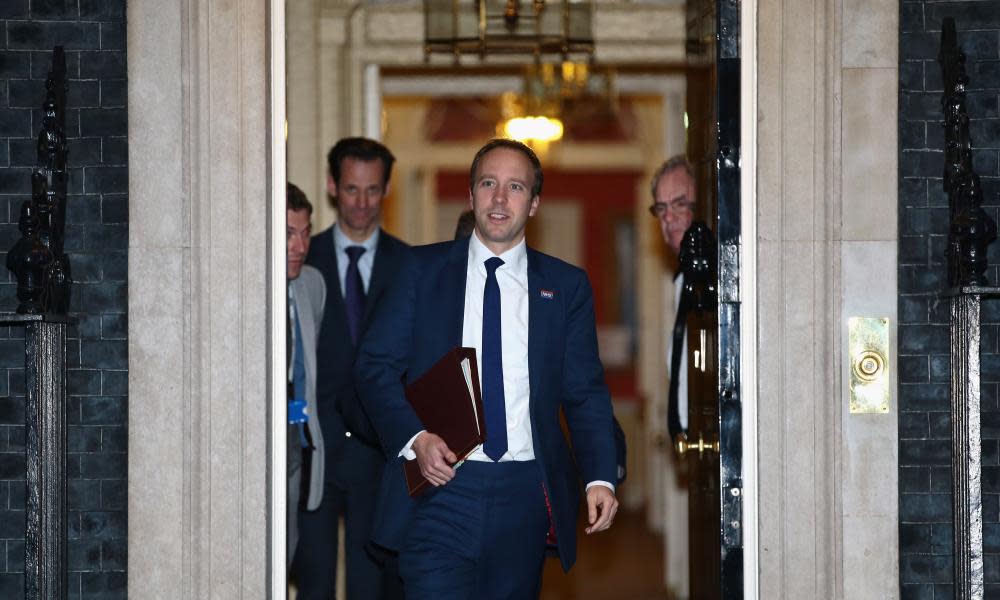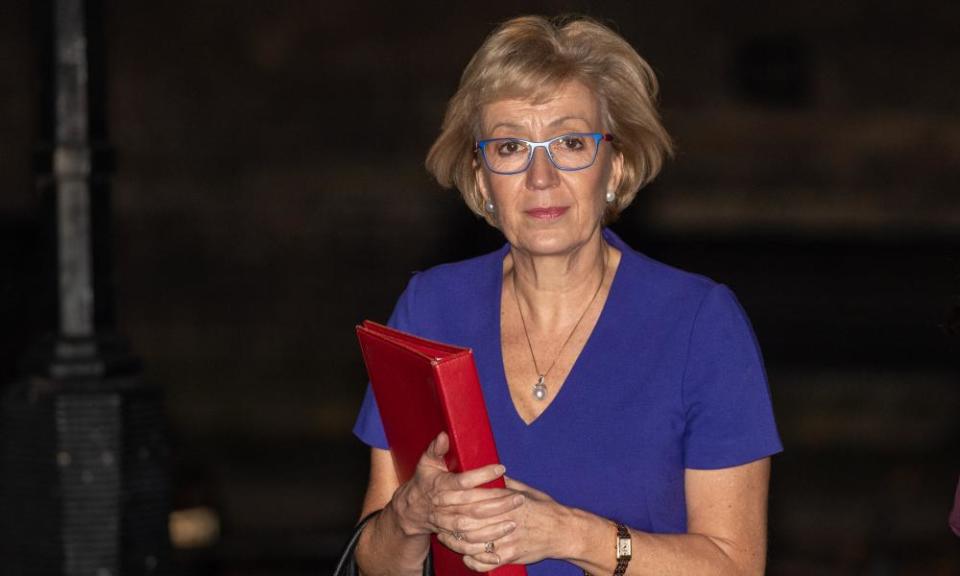Brexit: May tells her cabinet, this is the deal – now back me

Theresa May summoned her cabinet to an emergency meeting on Wednesday afternoon to sign off her long awaited final Brexit deal, prompting hard-Brexit Tories to call for senior ministers to stand up and block it.
The critical meeting is the culmination of months of negotiations and will see May’s senior ministers consider whether they can personally endorse the agreement that the prime minister has been able to reach.
Ministers were summoned to No 10 in the early evening and some met individually with May or her chief of staff, Gavin Barwell. They were given the chance to read the key documents, although they were not allowed to take any papers home. Further one-on-one meetings were expected to take place on Wednesday.
“Cabinet will meet at 2pm tomorrow to consider the draft agreement the negotiating teams have reached in Brussels, and to decide on next steps,” a No 10 spokesman confirmed. “Cabinet ministers have been invited to read documentation ahead of that meeting.”
Key elements of the deal began to leak in the early evening. The UK was understood to have agreed that an independent arbitration committee will judge when a UK-wide customs backstop could be terminated, comprising an equal number of British and EU representatives plus an independent element.
There will be a review in July 2019, Brussels sources added, six months before the end of the transition period, at which it will be determined if the UK is ready to move to a free trade deal; transfer to the backstop; or extend the transition period, possibly by a year to 2021.
Ministers were expected to study the Northern Ireland specific elements in the backstop deal. No 10 sources insisted the region would not be treated differently in customs terms, although Brussels sources said Northern Ireland would have special status in the backstop in terms of the customs union and single market.
Hard-Brexiters swiftly reacted negatively to the prospective deal – and indicated they intended to vote against it if it came to parliament. Jacob Rees-Mogg, the chairman of the European Research Group, said: “I hope cabinet will block it or, if not, parliament will block it.”
Boris Johnson, who resigned as foreign secretary, said he believed the deal was “vassal state stuff”. He said the UK would be bound by laws over which it had no say, which was “utterly unacceptable”.
Iain Duncan Smith, when asked if the government’s days were numbered, said: “If this is the case, the answer is almost certainly, yes, because they’re in real trouble if they bring back something unacceptable to their party.”
Nigel Dodds, the DUP’s Westminster leader, said the deal was not acceptable if it matched what he had heard in leaks over the past few days. His unionist party props up May’s government.
“We have to see the details of it, but it appears to be a UK-wide customs agreement but [with] deeper implications for Northern Ireland both on customs and single market, and as Jacob has said, if that means that we’re taking the rules and laws set in Brussels, not in Westminster or Belfast, then that’s unacceptable,” Dodds said.
But Julian Smith, the chief whip, said he was confident of getting the deal through cabinet and ultimately parliament once ministers had studied the document. “The prime minister had worked day in and day out; negotiators worked through the night. We are on the cusp of delivering Brexit in a really practical way. She [May] has stuck with it through a really tough year or two.”
It is understood that one of the ministers who saw the prime minister, Andrea Leadsom, told friends she had “a good discussion with the PM” and will be at cabinet on Wednesday to discuss the Brexit papers with colleagues.
If the meeting concludes successfully, the government will publish the 400-page plus legal withdrawal agreement, the outline political declaration covering the future relationship between the UK and the EU and some accompanying explanatory material. Documents were expected to emerge in the early evening.

That will trigger the beginning of the process in which May will have to sell the deal to her party, to parliament and the country and in the process maintain her premiership.
A backstop is deemed necessary to avoid a hard border in Ireland if the UK and the EU cannot agree a free trade agreement by the end of the Brexit transition period in 2020. May has proposed a UK-wide backstop that would result in the whole country remaining in a customs union with the EU.
EU ambassadors had been due to meet in Brussels on Wednesday to discuss the European commission’s no-deal preparations. As news emerged of the tentative deal, the agenda was amended to make way for a discussion of the final compromise positions with the member states yet to see the final text.
Some details of the deal were, however, filtering through from the secretive “tunnel” in which the two sides have been negotiating. “London has to say yes now,” said an EU official at the heart of the negotiations.
The British team won a victory in persuading Michel Barnier, the EU’s chief negotiator, that the detail of any fisheries arrangement will be in the political declaration.
The backstop will also require the UK to maintain a “level playing field” with the EU on social and environmental regulation, with negotiators understood to have “heavily boosted” what that will mean with clear detail.
Brexiters in the cabinet – such as Leadsom and Penny Mordaunt – had previously raised concerns that the UK must not sign up to a backstop arrangement that traps the country in a permanent customs union.
Others who have voiced unhappiness in recent meetings include Sajid Javid, the home secretary, and Jeremy Hunt, the foreign secretary, both of whom are considered to be potential alternative leaders. Rumours were also swirling in Westminster last week that Dominic Raab was close to resigning amid concerns about the backstop.
“Brexiters in the cabinet will have to look deep in their souls now,” one Conservative Brexit source added.
If the cabinet agrees the plan on Wednesday, the EU expects to hold a special Brexit summit on 25 November, with EU affairs ministers likely to prepare the ground at an extraordinary meeting on 19 November.
Parliament will then ratify the deal in a keenly anticipated “meaningful final vote” that will take place in the middle of December. One Westminster source suggested that could happen on 10 December, following at least two days of debate.
Those hoping to hold a second referendum were expected to use that moment to try to win over a majority in the Commons to the idea.
On Tuesday night, the leaders of the four main opposition parties in parliament sent a joint letter to the prime minister demanding that the meaningful vote be subject to amendment, allowing alternative ideas to be considered.
Jeremy Corbyn, the Labour leader, Ian Blackford, the SNP leader, Vince Cable, the Liberal Democrat leader, and Plaid Cymru’s Liz Saville Roberts have signed a letter demanding the ability to amend, debate and vote on any Brexit withdrawal agreement.
The letter, sent on Tuesday, said: “As a minimum, any motion to this House must include: the possibility for multiple amendments to be tabled, with the Speaker able to select multiple amendments to be taken before the main motion.
“While we recognise parliament will have to approve or disapprove any agreement, it would be reckless to present this vote as take-it-or-leave-it without parliament being able to suggest an alternative.”

 Yahoo News
Yahoo News 
